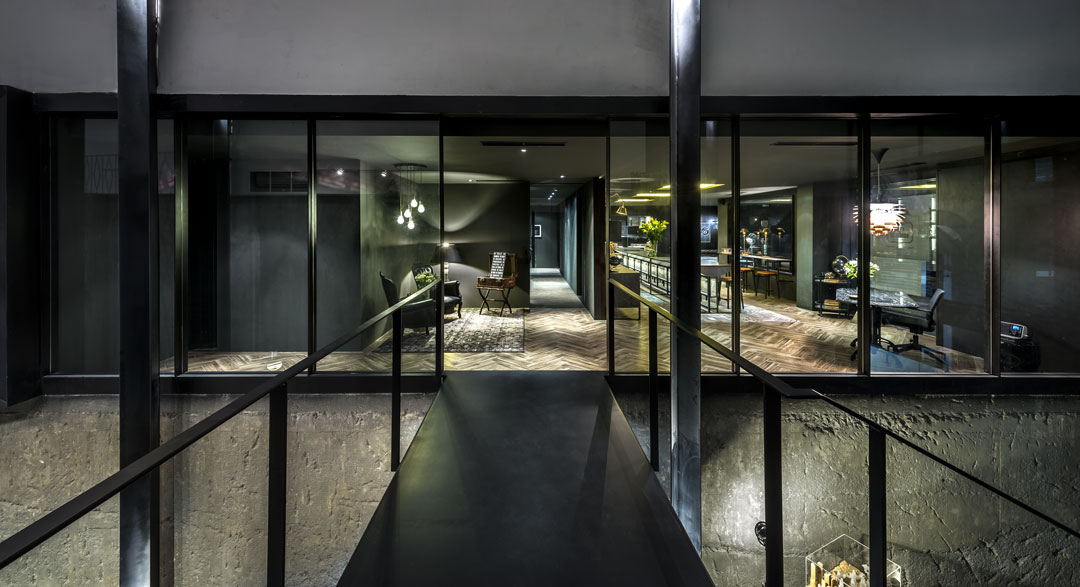
The Anti-Archetypal Office by Park+Associates
“What could scream #TGIF louder than this? ;-)” posts the firm on their Facebook wall, along with a picture of an open refrigerator packed with six dozen cans of Asahi, two dozen bottles of Hoegarden and assorted reds and whites at the Park+Associates office.
“Where do I sign up Lim Koon Park?” comments one of P+A’s followers.
Another post reads: “We’re worried that some of you might be having midweek blues at work. Here’s a little boost from us—hang in there! HAPPY MIDWEEK!” This time, the picture shows 40 or so P+A employees at a bar littered with bottles, jugs and juice cartons, hamming it up for the camera, some holding up wine glasses. Evidently, they are having a good time, and it’s enough to make anyone working in a regular office feel the midweek pangs more acutely.
The Park+Associates office, which has attracted considerable exposure for winning awards internationally and in Singapore, is still bringing in returns on Lim Koon Park’s SGD400,000 (around P13,400,000) investment on the 740-square meter space. “It’s already paid for itself,” says principal architect Park, who recounts how some colleagues told him he was crazy for spending so much on an abandoned 1960s school library into one of the hippest offices in Singapore, where hip work spaces are a dime a dozen.

An alto saxophone is playing softly in the background. We are seated at P+A’s much-photographed ‘pantry.’ Blanketed in matte black, with blue daylight gently washing in from windows on one side, and pools of yellow gold bathing the other, the 100-square meter space is both cool and warm, affluent yet welcoming. The office design was a labor of love by Park, his two partners and some of the staff. About a dozen employees pitched in by working on details, like painting the gold recesses in the pantry’s black ceiling. There was only one thing on Park’s wishlist he didn’t get: “I wanted a professional stove top with a range hood, but my partners didn’t agree. The guys just have to make do with the microwave.”
“When clients come, we don’t even need to show our portfolio. Seeing the office, they get a sense of the taste of the firm, and of how capable we are of doing a good job.”
– Lim Koon Park
Since moving in a year and a half ago, the office has won them several commissions. “When clients come, we don’t even need to show our portfolio. Seeing the office, they get a sense of the taste of the firm, and of how capable we are of doing a good job.” The office is a popular destination for student visits like Architours, and its undeniable vintage hipster vibe has made the firm so much more desirable to young creatives from around the region, including 20 Filipino architects.
READ MORE: The Office as a Design Playground by Jagnus Design Studio
Open plan
Walking with Park as he does the rounds of the expansive 460-square meter workspace, I’m struck by how noiseless it is. Are they really this quiet? “Some are probably talking on their computers,” says Park, scanning the room, satisfied by the intensity with which furrowed brows and eyes are glued to their screens.
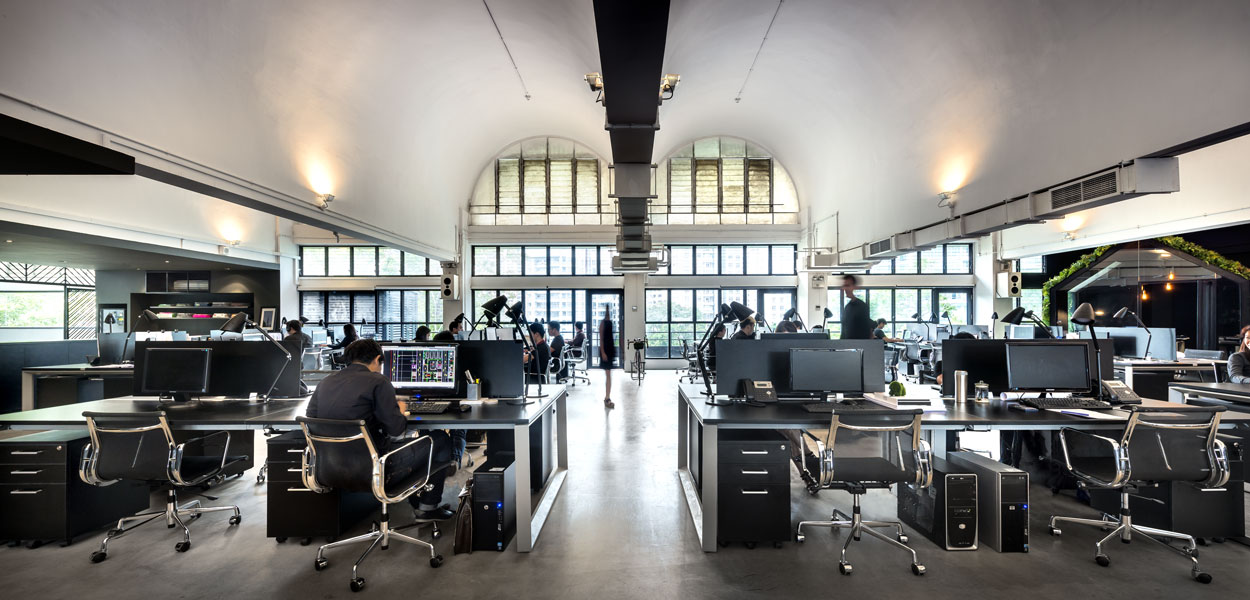
Park likes to keep things intense. “Passion for architecture and sense of duty are important to us,” he says. “Architecture is not just another job. You can’t insist on work-life balance, because you can’t look at the clock and say, ‘Time to stop architecture, it’s time for play.’ We don’t encourage that. We want people, who, even on weekends, surf the net looking at new designs and materials…we want people obsessed with design.” Maybe that’s why Park’s design director, Christina Thean, designed her office like a little house—when she’s in the office, she’s at home.
[one_half padding=”0 20px 15px 0″]
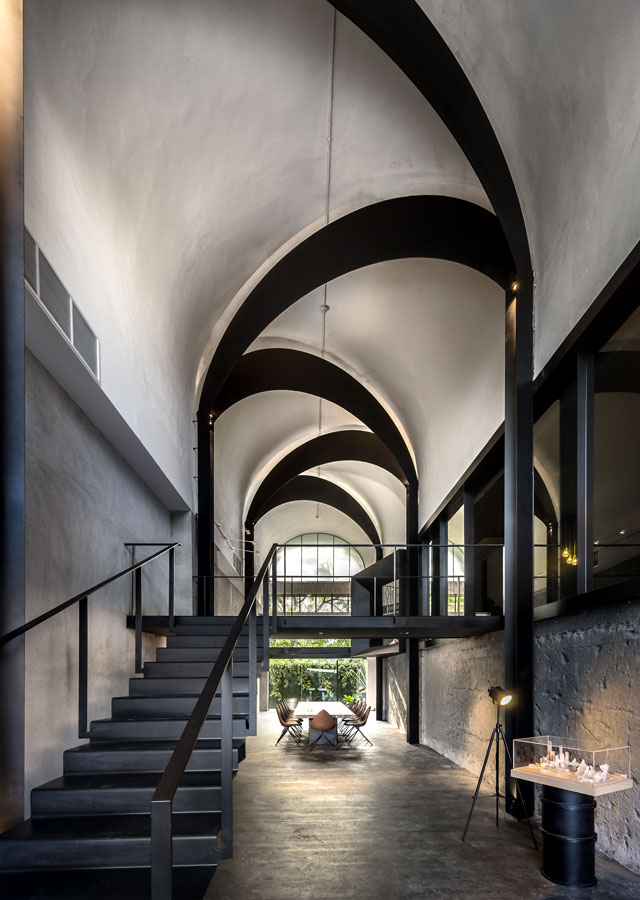
[one_half_last]
The open plan, Park says, is necessary for interaction and transfer of knowledge. Asked how they manage the balance between communication and concentration in the large workspace, Park says communication of ideas and thoughts are not necessarily a disruption: “Communication is not anti-concentration, so striking a balance between the two is not an issue.”
There are spaces for brainstorming, presentations and private talks—the formal meeting room, the tea/discussion area, the space outside the design director’s little house, the library, and ‘The Prelude,’ with its dramatic 8-meter high ceiling. Then there’s everybody’s favorite space, the gorgeous pantry with its handsome living area and a secluded nook off to one corner.
Non-corporate
Apart from Thean, only 49-year old Park and a lone accountant have rooms of their own. Park prides himself in running a tight and democratic ship. His other partner, project director Tan Peng Geok, prefers to sit with her team in the open space.
The office has no HRD person or receptionist, though they do have an administrative assistant, who takes calls and answers the door, but sits in the open workspace with everyone else. Park, who changes the office lightbulbs himself, and is not above taking used coffee cups to the pantry, doesn’t have a personal assistant. “That’s just how we grew up as a firm and how we like to work. I don’t think I could keep a good PA motivated with enough interesting things to do. When people don’t have much to do, they are happy at first, but after awhile, they get demoralized and they get sloppy. It doesn’t help them and it doesn’t help us.”
Like family
Park describes the office culture as “very family-like,” but he must subconsciously mean it in a traditional Chinese family way. “Well, I don’t think I’m strict. But I don’t chitchat with them too much,” Park says. After some thought, he adds: “I feel bad that they feel very, very terrorized by me, very scared of me. I don’t shout—I hardly ever raise my voice. But if I talk in a stern voice, they get very emotional and upset, and then they scramble all over the place.” Asked for a sample of a stern voice, Park, who is soft-spoken, speaks softer still: “Why is this like this? Didn’t we already talk about this?” Then Park experiences an epiphany. “That’s how my father used to be. We were not like the modern father and son where you go to the ballgame together and have a lot of interaction, and you talk like buddies… he is a very traditional Chinese father—doesn’t say much, and stern.”
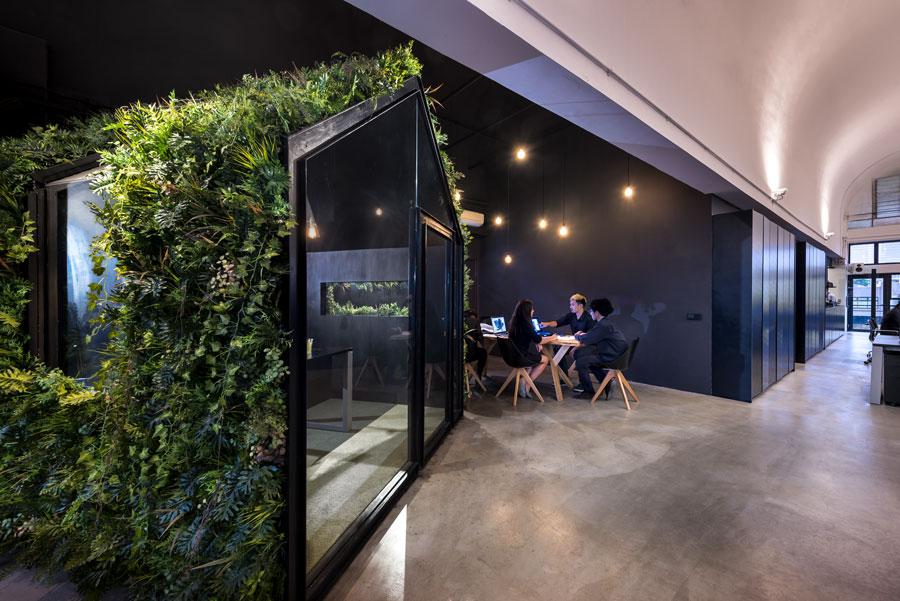
Park however, is hardly the disciplinarian boss, and has taken pains to make the office a free-spirited and creative environment, one that promotes experimentation and people motivating one another. “I still remember vividly the thoughts I had when I was a student and employee, the arguments I’d have in my mind whenever management had something new to implement. So I find it very difficult to discipline my employees. For example, up to now, we haven’t put in a clock in-clock out system. My partners say, ‘Are you really not going to? We are growing so big!’ But my guys work hard, stay very late, and then we’re going to check what time they come in? I think that would be demoralizing.”
Firing
There are the occasional black sheep, but they don’t last long. Says Park: “If you don’t have the right attitude, you just won’t cut it here.” Park+Associates haven’t fired anyone yet, although over the years, they have “encouraged” a couple of people to look for work elsewhere. What gets them encouraged to go looking? “Doing short cuts, doing things quick,” Park answers right away. “We want our people to do things with care. Even if you’ve finished your work, you put it aside and start over so it gets better. We value creativity first. Being a reasonably good administrator is a far second. Conversely, there are firms that value organizers good at administration and paperwork; they don’t emphasize creativity because they’re copy architects, they don’t need to push boundaries.”
Pushing boundaries
Before establishing his own bureau, the young Park was reasonably happy at his job, where he worked for nine years. Things changed, he says, with the Asian financial crisis in the 1990s. Money became the priority. “People were less and less dedicated to architecture and exploring design. I didn’t think that was the way I wanted architecture practice to be,” he reminisces.
At Park+Associates, the driving concern is to push the envelope in aesthetics and construction. “Earlier, we went about it intuitively,” Park relates. “In the past two, three years, we have become more deliberate. We make sure that if the project allows for it, we put in additional resources so as not to recycle old ideas. Say you need 100 man-hours on design for a project. Instead, we spend 150 man-hours to hopefully produce a high level of design. We don’t have to do that. We still get the same fee. We could take the client’s brief and render it prettily, and sure, that could get the job done. Instead, we try to re-interpret the brief to come out with something to surprise and delight the client. Of course it is not different for difference’s sake. It still has to fulfill the brief—all the required functions will be there—but we want to offer a new perspective on what a house or a mall could be. If not, I’d rather not do the project because it doesn’t enrich my portfolio, it doesn’t motivate my guys, and it doesn’t bring us satisfaction. It has to give us more than money. And it has worked.” Park says they are not yet in the position to select clients, but they “are on the way there.”
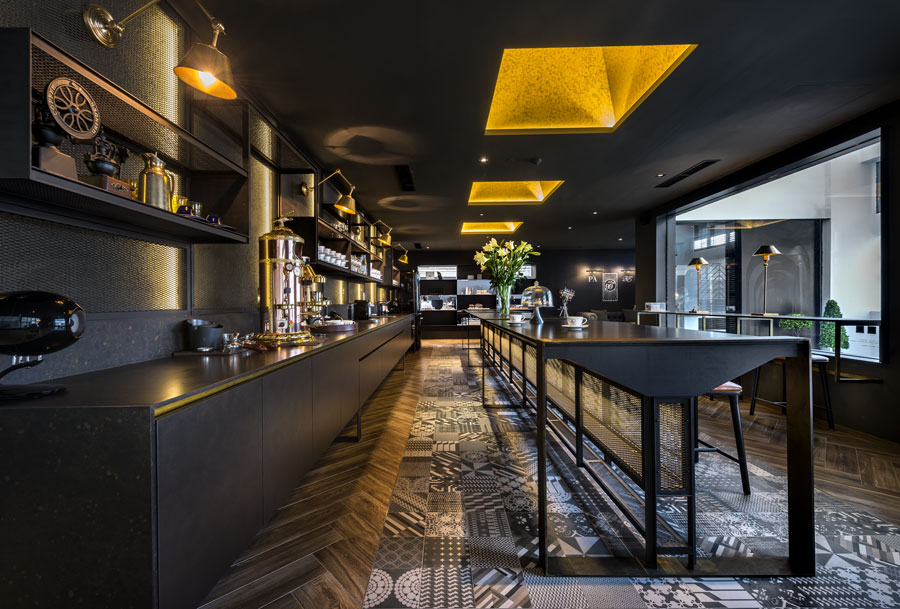
We are done touring the office, and have wound back where we started, in the warm darkness of Park’s wine and coffee pantry. I ask him what he is proudest of. He starts slowly at first, then picks up steam, his words imbuing the architect with vitality: “I’m proud that up to now, I am able to disseminate to our team my passion for architecture and for building the firm, through of course, my two directors. How I get the directors to see eye to eye with me, and how they are able to motivate the guys. It’s a very subtle and very difficult thing to do. We are not hierarchical. We are a discussion-based and community-driven studio. This is an office where architects question convention and explore alternative answers. That’s one of the strengths of the firm. I’m proud of the energy in the office.” It is the energy of Park’s anti-office. ![]()
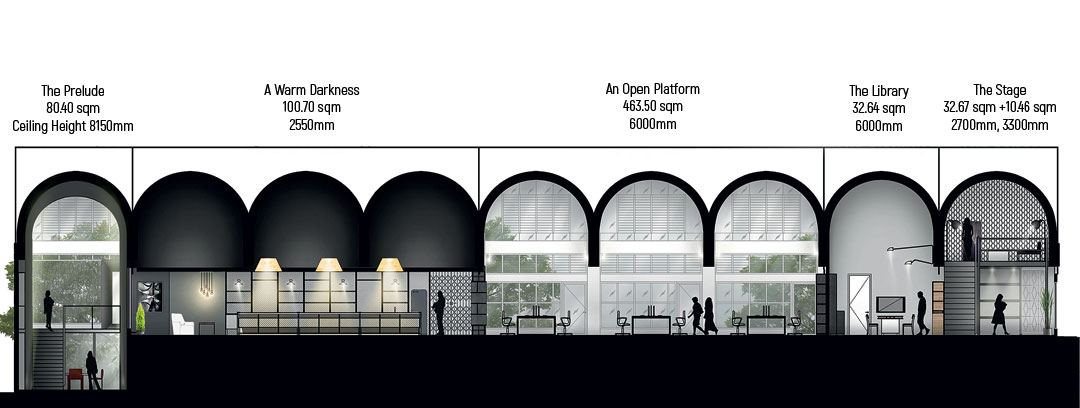
This story first appeared in BluPrint Volume 4, 2015. Edits were made for Bluprint online.
Images courtesy of Park+Associates


